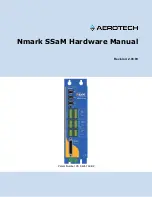
15
Quick User Guide – IRIScan
TM
Executive 4
Battery-related safety instructions
For models with interchangeable batteries (IRIScan Book), never leave dead batteries in the
device, because they may corrode and cause irreversible damage to the device (the warranty
does not cover this type of incident). When replacing the batteries, handle them carefully to avoid
all risk of injury or fire due to leakage, overheating, explosion, erosion, or any other damage to
the product.
For models with a built-in rechargeable, non-interchangeable lithium battery (IRIScan Anywhere 3
or IRIScan Anywhere 3 Wifi), do not open the scanner and never remove the battery. It should be
replaced by certified technical personnel only. In case of doubt about battery performance, stop
using the scanner and contact your dealer or IRIS customer support to receive instructions on the
procedure to follow.
If you are not planning to use the scanner for a long period (more than a month), be sure to
remove the batteries from models that allow it (IRIScan Book).
If you have not used the scanner with non-interchangeable lithium battery (IRIScan Anywhere 3
or IRIScan Anywhere Wifi) for at least a month, remember to charge it fully before its first use.
Keep batteries out of the reach of children. If battery acid comes into contact with skin or eyes,
immediately rinse the affected area thoroughly with water and seek medical treatment. If a
battery is swallowed, seek medical treatment immediately.
If battery acid leaks from a battery, wipe it off with a cloth and replace the battery with a new
one.
Use alkaline, lithium or Ni-MH batteries (AA or AAA size) for the IRIScan Book 3 and IRIScan
Book Executive 3 respectively.
Do not use new and old batteries together or mix different types or brands of battery.
Insert the batteries so that the polarities are as indicated.
Remove dead batteries promptly.
Do not expose batteries to heat, fire or water.
Do not remove batteries with metal objects such as tweezers or the tip of a pen.
Cover the ends of the batteries with tape to prevent combustion or explosion when disposing of
them.
Make sure always to follow local battery disposal regulations.
FCC Radio Frequency Interference Statement
This product has been tested and found to comply with the limits for a class B digital device, pursuant
to Part 15 of the FCC rules. Operation is subject to the following two conditions: (1) this device may
not cause harmful interference, and (2) this device must accept any interference received, including
interference that may cause undesired operation. The FCC Class B limits are designed to provide
reasonable protection against harmful interference in a residential installation. This equipment
generates, uses, and can radiate radio frequency energy and, if not installed and used in accordance
with the instructions, may cause harmful interference to radio communications. However, there is no
guarantee that interference will not occur in a particular installation. If this equipment does cause
harmful interference to radio or television reception, which can be determined by turning the
equipment off and on, the user is encouraged to try to correct the interference by one or more of the
following measures:
Reorient or relocate the receiving antenna.
Increase the separation between the equipment and receiver.
Connect the equipment into an outlet on a circuit different from that to which the receiver is
connected.
Consult your point of purchase or service representative for additional suggestions.


































